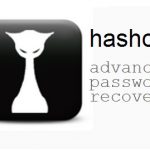
 Anyone working in the field of Digital Forensics is aware that a substantial portion of time is dedicated to reverse engineering passwords. That is, in most cases a digital forensics investigator receives a password-protected handheld device, or a laptop with an encrypted hard disk, or a Microsoft Word document which has been password protected.
Anyone working in the field of Digital Forensics is aware that a substantial portion of time is dedicated to reverse engineering passwords. That is, in most cases a digital forensics investigator receives a password-protected handheld device, or a laptop with an encrypted hard disk, or a Microsoft Word document which has been password protected.
It is then the task of the investigator to try to retrieve the evidence, and that in turns requires reverse engineering the password; in some cases this can be achieved by recovering the hash of the password, which is stored somewhere (the locations are often known) on the device’s memory.
In order to obtain the password from the hash, we have to run a brute-force search algorithm that guesses passwords (the guesses can be more or less educated, depending on what is known about the case). Sometimes we get lucky. There are two programs that are used extensively for this purpose: John the Ripper and hashcat.
 As we have been studying methods for recovering passwords from hashes, we have been using AWS EC2 instances in order to run experiments and help HTTF with their efforts. Together with senior capstone students as well as graduate students in Cybersecurity, we have been creating a set of guidelines and best practices to help in the recovery of passwords from hashes. AWS EC2 instances are ideal as they can be crafted to the needs and resources of a particular case. For example we are currently running a
As we have been studying methods for recovering passwords from hashes, we have been using AWS EC2 instances in order to run experiments and help HTTF with their efforts. Together with senior capstone students as well as graduate students in Cybersecurity, we have been creating a set of guidelines and best practices to help in the recovery of passwords from hashes. AWS EC2 instances are ideal as they can be crafted to the needs and resources of a particular case. For example we are currently running a t2.2xlarge instance on a case where we have to recover the password of a Microsoft Word document; we have also used a p2.16xlarge with GPU-based parallel compute capabilities, but it costs $14/hour of usage, and so we deploy it in a very surgical manner.